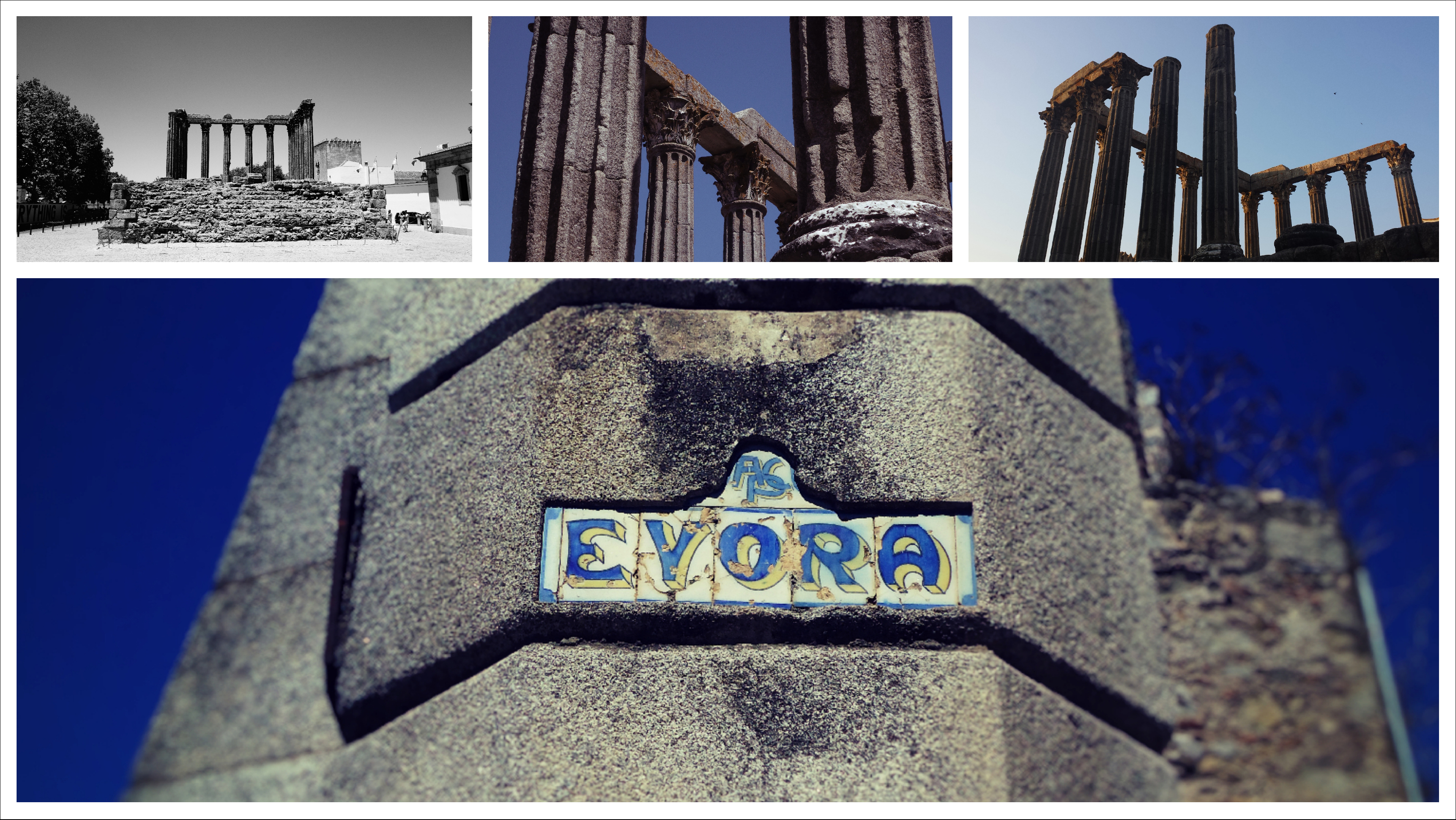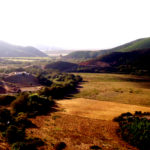
Évora – Juvenile Queen of ancient Alentejo
Right in the heart of droughty Alentejo a proud and majestic town stands like a mirage in all this thirsty soil. Évora is the royal oasis in the sun burned plains of Alentejo. The dark stones of the solid town wall have always been a frontier between the relentless heated steppe outside to the pleasant shadowy streets of the historical center. With a Roman temple (first century), a cathedral (14th century) and an impressive aqueduct (16th century) Évora displays ancient heritage in every corner. Moreover, not only the past is very much alive, here. The present is just as vivid as it used to be in the bygone times of Roman, Moorish or Royal Portuguese ruler-ship.
Nowadays, youth escapes from most areas of Alentejo to find profitable work in the cities or abroad. Though, strikingly many young Portuguese are vitalizing the streets and places of Évora. The Universidade de Évora, that attracts 6.000 students from all over the country, of course, pulls age demographics so remarkably down. Also, the loose feeling, sensible in all areas of this city, be a fascinating bait to young people. Walking through the narrow alleys you will always find a café or a bar filled with lively conversations and frolic temper. Whereas in the villages nearby, hardly any young people are part of the town picture, in Évora they are dominating it.

In the nights, Évora is even more crowded than during the hot daytime. The great many of really good restaurants are all filled with live and while enjoying our food, we observe the nightlife. Despite the masses of people, a certain quietness strikes right away. Whereas I am used to the loud music and screaming conversations in the pubs and restaurants of my German home, here everything happens in a much calmer way. Of course, everyone is chatting, laughing and joyful, but in the most amicable and relaxed way. The vinho tinto (red wine) and Super Bock beers are lavishly consumed. However, nowhere any kind of stressful tension is sensible that is present in other urban nightlife establishments. Peaceful partying. And subtle flirting, furthermore. We see groups of young boys and girls sitting together, having dinner, devoting to extensive conversations. The reason, why this seems particular, is our experience in the rural regions of Portugal. In the countryside, mostly elder men and women populate the squares at night, a glass of fine Port in their hands. In most of these villages, we see the residents assemble in little groups – strictly separated by gender. While the men gather around the tables outside a bar, the women of the community sit together near the market square or in on the benches of a park. Gender-divided evening pleasures.
In Évora, these traditions are thrown overboard. Here, sparkles in the eyes of the young people proof how happy they are to have overcome old traditions. The politeness they treat each other with is obvious. Machismo seems unheard-of, totally. The prejudice of the Southern-European male behavior here is what it is – a prejudice. You couldn’t tell if it’s friendship or serious flirting, that’s happening right in front of your eyes. As if no one dares to show inappropriate manners in the shadows of the historically portentous walls. Be sure, to take your time to observe the very own Portuguese charm in Évora!
Besides being young, polite and full of joie de vivre, the inhabitants of Évora are lucky to live in a city of historical grandeur. All the former besieging powers left their architectural footprint in the historical city center. The small white residential buildings look like they were part of a Moroccan village. The Sé de Nossa Senhora da Assunção was constructed around 700 years ago. The massive granite cathedral offers a very special service: the best view not only over Évora, furthermore, over the far plains of Alentejo. You are allowed to walk outside and across the roof of the church building to enjoy one of the best views of all Portugal. The morbid Capela dos Ossos (chapel of bones) is the result of a dignified necessity. When the cemeteries of Évora were cramped during the 16th century, the bones of the faded were recycled to become eerie wall decorations, preventing the bones from being disrespectfully discarded. The inscription Nós ossos que aqui estamos pelos vossos esperamos (“We bones that are here, wait for yours to come“) are a bleak reminder of the visitor’s very own destination.

Life in Évora combines the old and the new times into a fascinating and vibrant atmosphere. Every time I am there, I get struck by this certain energy. The thought of missing only a little bit of the street life makes me anxiously hurrying out of the hotel room. During the nights, I desire to be present in every corner of the city, in every bar and at every private party just to soak in as much as possible of this vital sense. Then I am prepared to return into the exhausting heat of Alentejo.


Leave a Reply